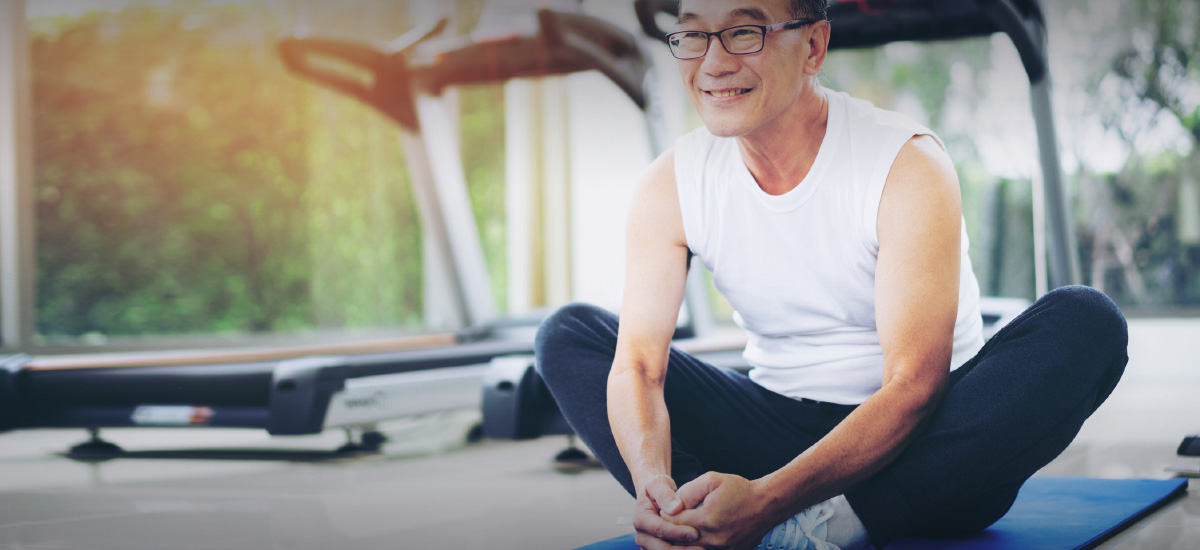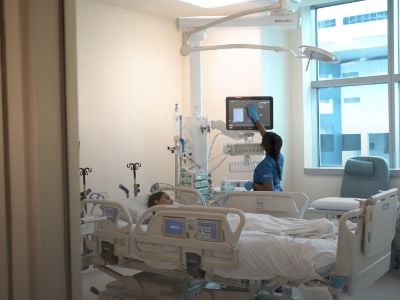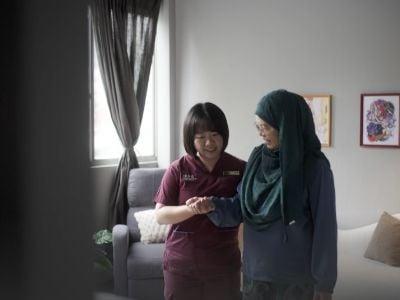Published on 16 October 2021
Flexibility is known throughout the sports world for bolstering a host of performance benefits. From gymnastics, dance, martial arts, to many other disciplines, being flexible often offers an added advantage in terms of athletic performance.
The American College of Sports Medicine (ACSM) defined flexibility as 'the ability to move a joint through its complete range of movement (ROM)’. ACSM also highlighted flexibility alongside aerobic, resistance and neuromotor training as the pillars of physical health and fitness.
So how important is flexibility for non-athletes?
Mr Gordon Soh, Senior Physiotherapist, Ng Teng Fong General Hospital (NTFGH), explained the benefits of being flexible. “Having a good foundation in flexibility ensures that your relevant joints are able to move freely through its full ROM, thereby helping your body to move freer during sport and also improve our economy of motion,” he said.
Flexibility can also help with creating general comfort and an ease of movement. “People who are on the less-flexible end of the spectrum may find it difficult to move their body freely as a result of the hypo-mobility and stiffness arising from the lack of flexibility in their joints. This may potentially contribute to muscle tightness and discomfort in areas such as their lower back, ankles and knees,” said Mr Soh.
Flexibility also varies from person to person, with certain individuals born with a natural capacity for it. For the rest of the population who aren’t equipped with the same level of flexibility, all hope is not lost - flexibility can be nurtured over time and through training.
To begin with, there are simple ways to test how flexible you currently are. Mr Soh recommended a simple ‘Sit-and-Reach’ test as a baseline measure of lower body flexibility. If performing this exercise proves to be too strenuous and creates a significant amount of pain in the body, it may be a sign of decreased flexibility.
In order to build up your flexibility, each major joint area should be included. Mr Soh recommended a basic stretching framework for beginners:
Work on your Shoulders, Chest, Neck, Trunk, Lower back, Hips, Knees and Ankles
Complete 60 seconds of total stretching for each joint
2 - 4 repetitions for each stretch (i.e. 2 x 30 secs or 4 x 15 sec)
Frequency: 2 - 3 times a week
He also emphasised the importance of performing these drills at the optimum time in order not to cause injury to the body. “Stretching should be done after warming up your muscle either actively, through physical activity or exercise, or passively, through heat packs. This helps your soft tissue structures to be more pliable and ‘stretchable’, making your stretch more effective and reducing the likelihood of you injuring yourself during stretching.”
While inadequate flexibility might not be fatal, the benefits that it offers your body are multifold, something that might only become apparent once you’ve lost it. Mr Soh concluded, “The true value of flexibility may only be best appreciated when a sudden loss of ROM occurs, which is most common after an injury or after an orthopaedic operation.”
Written in consultation with Mr Gordon Soh Qin Wen, Senior Physiotherapist, NTFGH.




